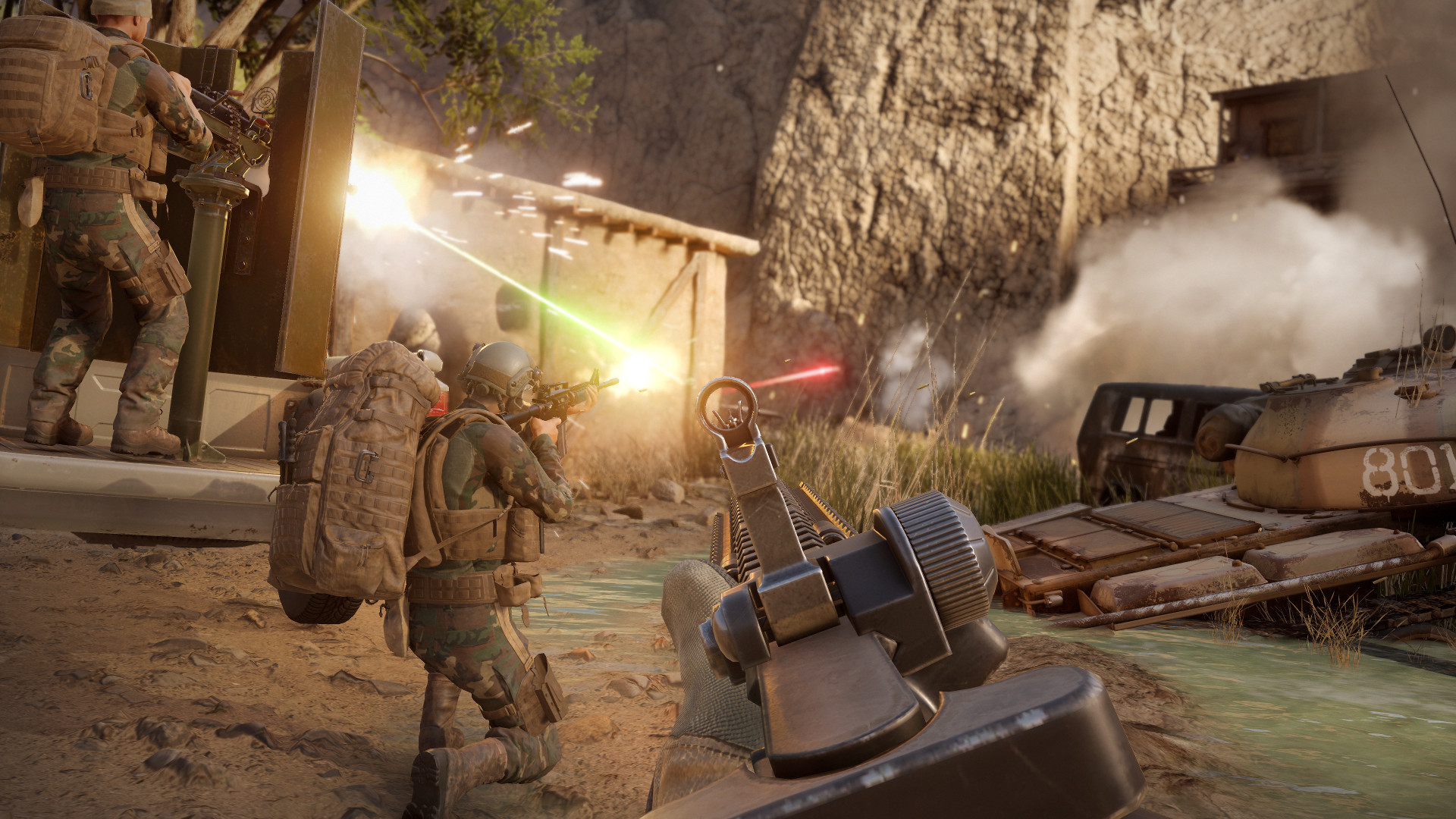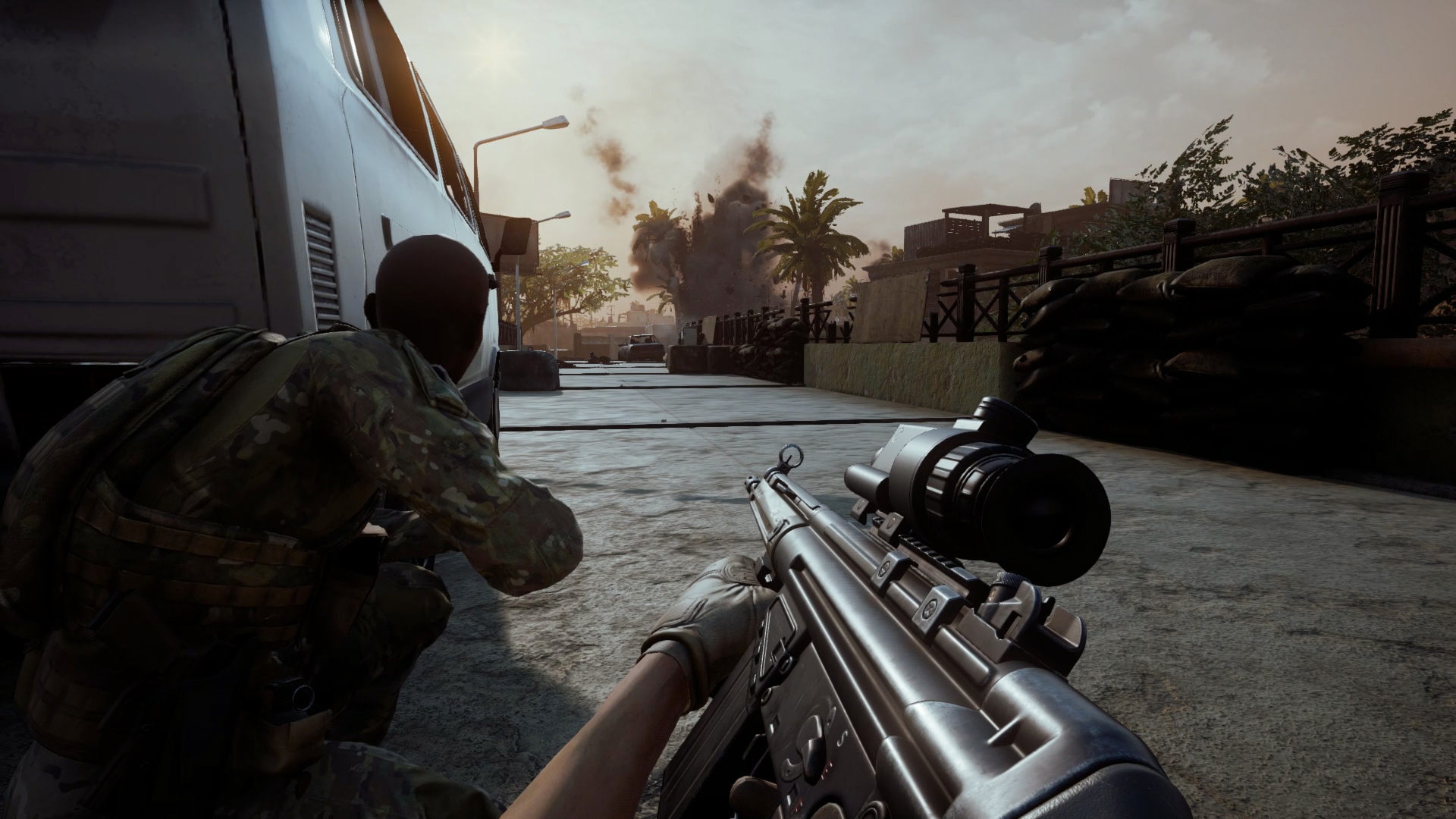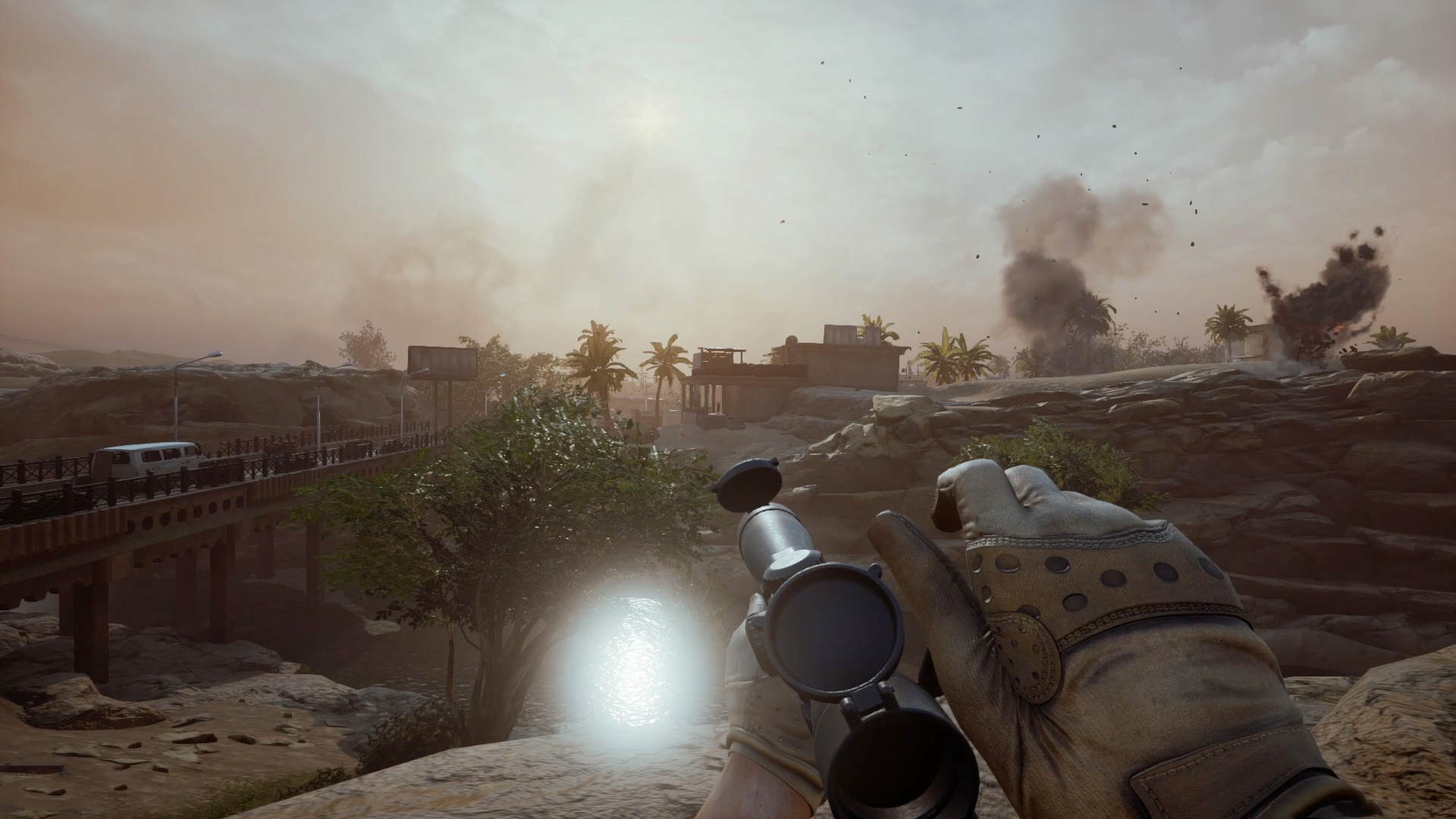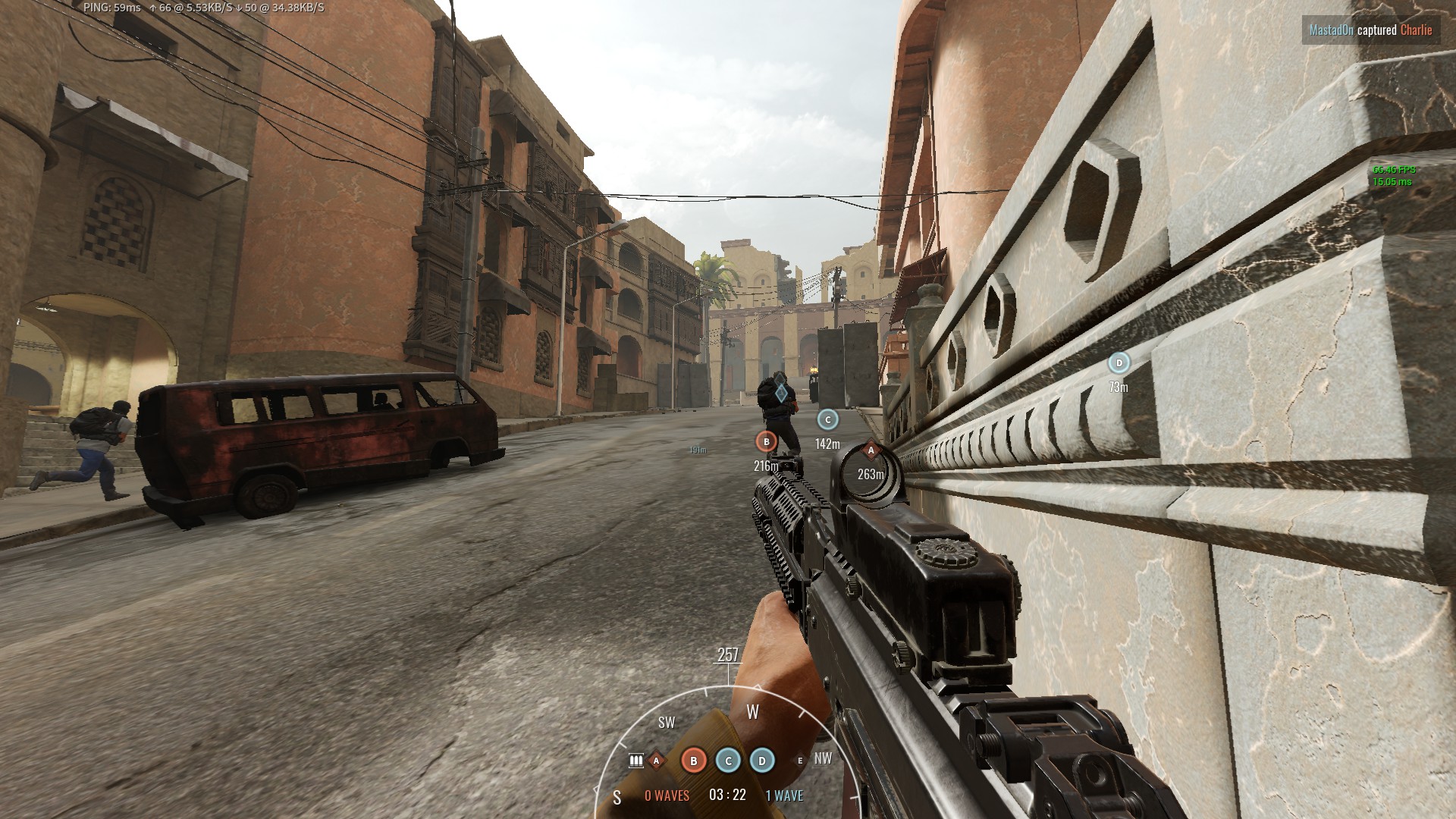Insurgency is back, more realistic and prettier than ever.
Type: Multi-player
Genre: FPS, Realistic
Developer: New World Interactive
Publisher: Focus Home Interactive
Release date: 12 Dec, 2017


Insurgency: Sandstorm is the newest installment on a franchise whose roots date all the way back to 2007, with the Source Engine mod INSURGENCY: Modern Infantry Warfare. Ever since the beginning, the goal of the series has always been to deliver a tactical hardcore first-person shooter, with a strong emphasis on realism and teamwork. This type of shooter was always part of a very niche market within the online FPS genre, so I feel that these titles were never really that popular as they deserved.
With that said, Insurgency: Sandstorm has experienced quite a rocky development process, having been delayed after some rough beta testing proved that the game could use more time in the oven. Fortunately enough, the delay was appreciated by pretty much everyone once people realized that the game definitely wasn’t ready, and it’s better to delay the game than to release it in a broken state and have to endure things like mass review bombing on Steam. Now, while the delay allowed the game to be improved tremendously from a technical standpoint, it still has its problems, so no, it’s not perfect by any means.

First of all, I’d like to say that even though the game is strongly oriented towards online PvP, it also offers an extremely enjoyable PvE cooperative mode. Here you play either solo or with other people against AI, as you capture objectives and attempt to destroy weapons caches across each map. Besides that, co-op pretty much features the same ruleset as the PvP modes.
Insurgency: Sandstorm offers three different game modes where you can fight other players, with each of them fitting a particular gameplay style and pace. First of all, one of the biggest differences between Sandstorm and other shooters is that it doesn’t feature an instant respawn system like other games have in Team Deathmatch or Search and Destroy. Instead, each team has a specific number of respawn waves, which are usually triggered whenever something happens, depending on the game mode. This means that the dead members of a team always respawn at the same time, there are no people spawning on their own via a ticket system like in Battlefield.

As far as actual PvP game modes go, you have Push, which initially can feel like it’s the least balanced mode of all three. In Push, one team has to make its way through the map by capturing several objective points, while the defending team has to hold the enemy off until they run out of spawning waves. The attacking team starts with less waves than the defenders, but every time they capture a point they gain more respawn waves and they also extend the time limit of the match. If the attacking team manages to capture all points and destroy the enemy weapons cache, they win.
Then there’s Skirmish, which is the most chaotic game mode. Here teams not only have to fight in order to defend and capture objectives, but they also have to destroy the enemy team weapons cache, everything at the same time. If your team loses the weapons cache, it’s game over, even if you were holding all objective points. On the other hand, in Firefight there are only three objective points on the map, therefore these matches tend to be much quicker than the other two modes. If competitive gaming is something up your alley, the game also features a ranked 5vs5 system, where you get assigned to a specific skill group based on your performance after ten placement matches

Thanks to the different types of situations that you’ll face, not only in each game mode but also in each map, both on the Security and the Insurgents team, the class system is really allowed to shine here and it clearly stands out from the rest of the shooters out there. As it’s the case with some other games, the Insurgents have access to a specific pool of weapons and the Security forces have access to another. On top of that, much like 2014’s Insurgency, Sandstorm features a class system with a limited amount of players on specific roles.
Some classes have their own unique weapons as well, like the Gunner and the Marksman, but my favorite has to be the Observer. An Observer’s job is to follow the team’s Commanders and relay their fire support requests, which includes calling in airstrikes, smoke mortars, chemical mortars, among a few other things that will surely wreak havoc amongst the enemy ranks. The reason I enjoy playing as an Observer so much is because I get to always have a pretty reliable weapon, no matter on which side I’m playing on, and I always have something extra to do, as the Observer is pretty much the equivalent of a support class. I find it hilarious when I call a chemical attack on a location where the Security forces are holed up and they just start scattering, while a few insurgents are just waiting patiently with their gas masks on picking them off one by one.

Insurgency: Sandstorm features a considerable amount of customization, but perhaps not in the sense you’re expecting. Equipping different weapons, customizing them with attachments, bringing extra grenades, or bringing along heavier armor costs you supply points, and you only have so many that you can use. It’s impossible to get the best of the best without compromising somewhere on your loadout. On the other hand, there are also numerous cosmetics that you can unlock with in-game currency that you earn by simply playing the game.
A huge deciding factor on whether a shooter is good or not is always the shooting. Do weapons feel like they have impact and kick when you fire them? Do they feel different and can they be used differently? How do they sound? These are all questions whose answers tend to indicate if a game is a good shooter or a great one. Fortunately enough, Insurgency: Sandstorm’s gunplay and weapons are without a shadow of doubt really high up on my favorites list. While there are some weapons where I can’t see much reason to use them when there are others which are just simply better, for the most part, they all sound and feel satisfying to shoot and to kill with.

Given that this is a realistic shooter, the gun mechanics try to mimic reality to the tiniest details. The recoil on pretty much all weapons is insane, and if you go into this game spraying and praying without expecting a huge amount of kick to automatic weapons, you’ll be in for quite a surprise once you start shooting. Also, unlike most shooters, in Sandstorm, you have magazines instead of an ammo pool. This means that if you fire a few shots and reload your weapon, the bullets that were on that last magazine will not simply vanish, they will stay on that magazine until you eventually insert it into your gun again. With that said, you can always perform a quick reload if you find yourself in the middle of a firefight, which essentially makes it so that you throw your current magazine away, instead of storing it.
The sound design in this game is nothing short of excellent. There have been countless times where, despite the fact that I was fully aware that an enemy was just around the corner, I still jump on my chair when he starts shooting at me. Gunshots are loud and sound differently depending on your surroundings, thus making it easy to discern if you’ve just heard an enemy fire a gun from inside a building on out in the street. In addition, since each team also has their own set of weapons, it’s easy to figure out if the shots you’re hearing during a fight are from an enemy or a friendly.

This brings up another aspect of the game’s realism, which is the fact that there’s barely any UI elements. Sure, you can see some indicators hovering over your teammates across walls, but sometimes you just see someone turn around a corner and your first reaction is to shoot them. Another cool aspect of the game is the fact that, if you shoot an enemy and you lose sight of them, there’s no way of knowing if you actually got the kill unless you go to their last location and search for the body. There’s no kill confirmation prompt, no spotting system, nothing. Everything is as minimalistic as it can get.
It’s worth keeping in mind that this is a very mature game. There is a lot of blood, dismemberment, and tons of swearing by the game characters. Speaking of which, one of the things that really became apparent to me on my first few hours with the game was that things that happen in the game can trigger responses by characters. For instance, if a teammate attacks you, you’ll start screaming at them, and you can even intimidate them via the radial voice command menu. Furthermore, the existence of proximity voice chat only makes the game even more thrilling. Just picture this, you’re defending a point, and you suddenly start hearing enemies calling down their strategy, and little do they know that you’re just around the corner listening into their conversation. On top of that, the radio filter only adds to the immersion.

As I’ve said, the sound design is superb. As an insurgent, there’s nothing as frightening as hearing the sound of an attack helicopter in the distance, as it starts firing a volley of rockets and then proceeds to hunt down those that do not seek cover indoors. On the other hand, playing against the insurgents and hearing a bunch of drones closing in can be just as daunting, as players will soon learn that this means that these drones are about to drop bombs nearby. The music in the game is also quite something, especially the track that kicks in when you’re the last man standing on your team. It’s pretty fitting given the situation, and it surely does not hold back in making things even more intense for you, as you try to sneak your way around the enemy and capture a point so that your team can respawn and come to your aid.
The franchise’s jump from the Source Engine to Unreal 4 is clearly noticeable not only in terms of graphical fidelity but also in what it allowed the developers to work with when developing the maps. There’s a predominant Middle Eastern look and feel to all of them, but they still feel very different from one another. Currently, there are six maps available, which I have to admit that is a bit underwhelming, but each game mode gives them a different spin and makes them feel a little different. There are urban maps that take place in a city/village, but there are also maps that take place in a mountainous area, and one that takes place in a refinery. I honestly can’t really do them much justice in describing them, and I obviously have my favorites, but some maps do seem to favor one team over the other depending on the game mode that you’re playing.

Verdict
I’m having a wonderful time with Sandstorm, but at the same time, there’s one thing that really hinders my experience sometimes, and that also happens to be the reason why I can’t in good will give this game an AUTOSAVE at the moment. Despite having improved tremendously, the game still suffers from optimization issues, and if you don’t have something that was considered mid to high-end PC hardware in the last three years or so, you’ll probably have a hard time in reaching a good compromise between graphical quality and performance.
My system is clearly starting to show its age, but I can play the game just fine for the most part, even though I still run into a bit of stuttering here and there. However, based on other’s feedback, people who have much more powerful machines than mine, the game could still use some more polish. With that in mind, once again I want to emphasize that the game has already received substantial updates which have severely improved performance, so I’m really hopeful for the future.
Likewise, one of the strongest points of the previous game was the continuous free updates, which have also been promised to be a part of Sandstorm’s life cycle. Furthermore, mod support will only increase the game’s lifespan even more once that’s implemented. As of right now, I do feel like the game could use a few more maps, but I can’t really say that I’m disappointed with what New World Interactive has to offer at the moment. If you’re into games like Squad, Arma, Day of Infamy, Red Orchestra, anything that is more oriented towards realism and teamwork rather than just straight up run and gun, I really think you should give this game a try. Along with Rainbow Six: Siege, this is one of the most satisfying online FPS experiences that I’ve had in recent years.










